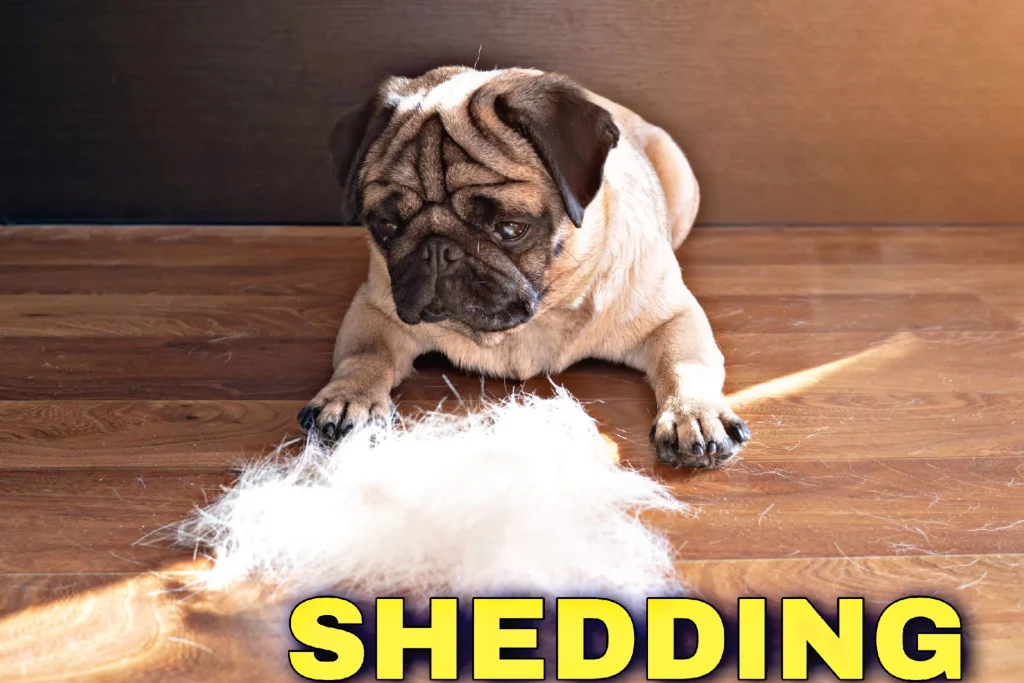Discover how to manage and reduce pug shedding effectively. Learn why pugs shed so much, grooming techniques, and the best tools for the job.

Pug Shedding: How to Keep Your Home Fur-Free
Pugs, with their adorable wrinkled faces and affectionate personalities, have captured the hearts of many dog lovers. However, if you’re a pug owner, you’re probably all too familiar with the constant battle against shedding. Pugs are notorious shedders, but fear not! With the right knowledge and tools, you can keep your home relatively fur-free and your pug looking their best.
Understanding Pug Shedding
Before diving into shedding control strategies, it’s essential to understand why pugs shed so much. Shedding is a natural process for all dogs, but certain factors can exacerbate it in pugs. Pugs have a double-layered coat consisting of a dense undercoat and a coarser outer coat. This double coat helps regulate their body temperature, but it also means more shedding.
Factors Affecting Shedding
Several factors can influence the amount of shedding your pug experiences. Seasonal changes, hormonal fluctuations, diet, and overall health play significant roles. Additionally, genetics can determine the intensity of shedding, with some pugs shedding more than others.
Tips for Managing Pug Shedding
Now that you understand why pugs shed, let’s explore some practical tips for managing their shedding:
- Regular Brushing: Invest in a high-quality grooming brush and make brushing your pug’s coat a part of your routine. Brushing helps remove loose fur and prevents it from accumulating around your home.
- Proper Bathing: Bathe your pug regularly using a gentle, vet-approved shampoo. Clean fur is less likely to shed excessively, and bathing helps remove dead hair and skin cells.
- Controlled Diet: Ensure your pug is eating a balanced diet rich in essential nutrients. A healthy diet promotes coat health, reducing excessive shedding.
- Supplements: Consider adding omega-3 fatty acids or other supplements to your pug’s diet. These supplements can improve skin and coat condition, minimizing shedding.
- Deshedding Tools: Invest in deshedding tools specifically designed for pugs, such as rubber grooming gloves or deshedding combs. These tools effectively remove loose fur without causing discomfort to your pet.
FAQs About Pug Shedding
- My Pug is shedding more than normal, what should I do? Monitor your pug’s shedding patterns and consult a veterinarian if you notice any sudden or excessive shedding, as it could indicate an underlying health issue.
- When is Pug shedding season? Pugs typically shed year-round, with increased shedding during seasonal changes.
- What’s the best tool to use when a Pug starts to shed? Look for deshedding tools specifically designed for short-haired breeds like pugs, such as slicker brushes or shedding blades.
- My pug is shedding in clumps, is that normal? Shedding in clumps could be a sign of an underlying issue, such as allergies or skin infections. Consult your vet for proper diagnosis and treatment.
Conclusion
While you may never completely eliminate shedding in your pug, you can certainly minimize it with proper care and grooming. By following these tips and investing in the right tools, you can enjoy a cleaner home and a happier, healthier pug. Remember, a little grooming goes a long way in keeping your pug’s coat—and your sanity—under control.
Additional Information
Are Pugs Heavy Shedders?
Yes, Pugs are considered heavy shedders. They have a double-layered coat that sheds continuously throughout the year. While shedding intensity can vary from one pug to another, most pug owners find themselves dealing with a significant amount of fur around their homes. Regular grooming and proper maintenance can help manage shedding and reduce the impact on your living space.
How Do I Stop My Pug from Shedding?
While it’s impossible to stop a pug from shedding altogether, you can take steps to minimize shedding and keep it under control:
- Regular Brushing: Brush your pug’s coat at least a few times a week to remove loose fur and prevent it from accumulating in your home. Use a grooming brush specifically designed for short-haired breeds like pugs.
- Healthy Diet: Feed your pug a balanced diet rich in essential nutrients, including omega-3 fatty acids. A nutritious diet supports coat health and reduces excessive shedding.
- Proper Bathing: Bathe your pug regularly using a mild dog shampoo. Clean fur sheds less and is less likely to cause allergic reactions in humans.
- Supplements: Consider adding supplements like omega-3 fatty acids to your pug’s diet to improve skin and coat health, reducing shedding in the process.
- Deshedding Tools: Invest in deshedding tools such as rubber grooming gloves or deshedding combs to remove loose fur effectively without causing discomfort to your pet.
By incorporating these practices into your grooming routine, you can significantly reduce shedding and keep your pug’s coat healthy and manageable.
Can Pugs Get Haircuts?
Pugs should not undergo traditional haircuts like some other breeds because their coats serve important functions, including insulation and protection from the elements. However, you can trim your pug’s nails, clean their ears, and tidy up their facial wrinkles and hygiene areas as part of regular grooming. Consult a professional groomer or veterinarian for advice on maintaining your pug’s coat without compromising its health and functionality.
Are Pugs Easy to Train?
Pugs are known for their intelligence and affectionate nature, but they can also be stubborn at times, which can make training challenging. However, with patience, consistency, and positive reinforcement techniques, pugs can be trained effectively. Start training your pug as early as possible, and focus on short, engaging sessions to keep them interested. Use treats and praise to reward good behavior, and be patient and consistent with your training efforts. With time and effort, you can teach your pug basic obedience commands and establish a strong bond based on mutual trust and respect.